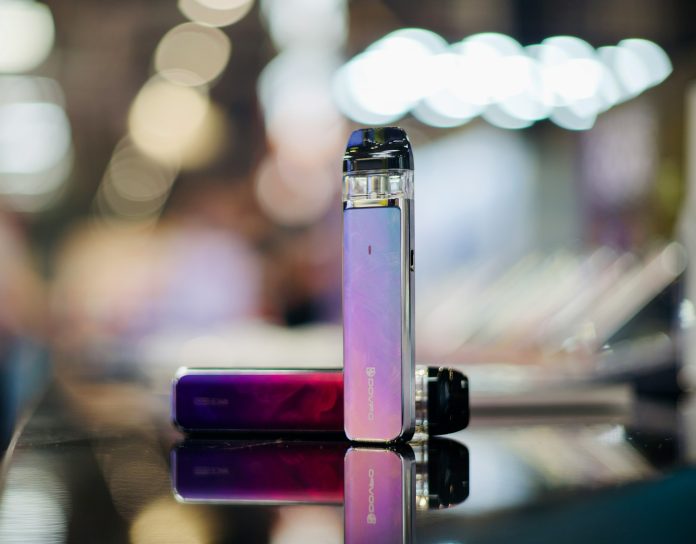The vaping industry has matured over the last decade, and as a result, regulating vaping kits has become increasingly important. The UK government has legislated several pieces of legislation to ensure e-liquid product safety and protect consumers from damage. In addition, E-liquid rules are planned to increase transparency and allow customers to make educated decisions about goods. This blog post will discuss crucial UK regulations that offer a safe and protective experience.
A Brief Overview of E-Liquid Regulations in the UK:
E-liquids, the fluid used in e-cigarettes, are severely governed under the UK’s implementation of the Tobacco Products Directive (TPD). This regulation establishes precise criteria for manufacturing, marketing, and selling disposable vape UK e-liquids and vaping equipment.
One of the TPD’s most essential components is its nicotine content regulations. According to the rules, e-liquids supplied in the UK cannot contain more than 20mg/ml of nicotine. This limit guarantees that vapers do not consume excessive nicotine, lowering the danger of addiction or nicotine toxicity.
In addition to nicotine limits, the TPD requires that e-liquids be sold in bottles containing up to 10ml of liquid, and vaping tanks or pods carry no more than 2ml of e-liquid. These restrictions are intended to reduce nicotine exposure and avoid accidental intake, particularly among children. Furthermore, e-liquid containers must be child-resistant and tamper-evident to ensure consumer safety.
Transparency is a key principle of the UK’s e-liquid rules. Manufacturers must publish thorough ingredient listings on all e-liquid containers, including disclosing allergens, ensuring that consumers have full visibility over what they’re using, especially when looking for the best vape kits.
Labelling and Ingredient Exposure:
Transparency is a key principle of the UK’s e-liquid rules. Manufacturers must publish thorough ingredient listings on all e-liquid containers, including disclosing allergens. Furthermore, the packaging must clearly state that the product includes nicotine, a highly addictive drug, even if the e-liquid is nicotine-free.
Product labels must also include safe-use and storage directions, nicotine content information, and suitable health warnings. The purpose is to provide consumers with information on using vaping goods properly.
Furthermore, e-liquid packaging must not contain any false claims. For example, producers cannot pitch their products as “healthier” or “safer” alternatives to smoking even though many individuals use vaping to quit smoking regular cigarettes.
Product Testing and Report:
Before an e-liquid product can be sold in the UK, it must undergo extensive testing and be approved by the Medicines and Healthcare Products Regulatory Agency (MHRA). This testing guarantees that the e-liquid is free of potentially dangerous substances such as heavy metals, carcinogens, or chemicals that could cause long-term health hazards. The product can be sold legally only after passing these tests and being approved by the MHRA.
Manufacturers must also submit an annual report to the MHRA that includes updates on the safety and quality of their products. This requirement guarantees that vaping products meet safety requirements over time and that any emergent dangers are promptly addressed.
Advertisement and Promotion Restrictions:
The advertising of e-liquids and vaping devices in the United Kingdom is strictly controlled. Companies cannot promote their products on television, radio, or print media. These limits are in place to prevent widespread marketing of vaping, particularly among young people who may be enticed to take up vaping as a trendy activity.
Online advertising is permitted, but it is subject to rigorous controls. Companies must be cautious not to make deceptive claims or target young customers. Furthermore, promotional content that may appeal to minors, such as cartoonish images or candy-flavored e-liquids, is prohibited.
The Role of Compliance in Safeguarding Public Health:
Compliance with e-liquid laws is a legal necessity and essential to preserving public health. The UK government is attempting to decrease the potential danger connected with vaping by ensuring that e-liquids are made in safe, regulated environments with transparent components.
One of the biggest worries about vaping is that e-liquids may contain dangerous chemicals or poisons. In countries with lax laws, the potential for contamination is increased, which can result in significant health consequences for users. In contrast, the UK’s solid regulatory environment has established a high bar for safety, protecting consumers from unsafe or subpar items.
Rising Popularity of Vaping Kits in the UK:
The vaping industry has grown dramatically recently, with manufacturers constantly inventing to match consumer demand. A prime example is the popularity of products such as the Hayati kits and Crystal 6000 puffs, which provide a more flavorful and convenient vaping experience.
Like many current vaping items, these devices must meet the same exacting criteria as traditional e-liquids. The Crystal 6000 puffs are intended to last longer, providing more puffs per device while remaining compliant with UK rules.
Despite its extended use, the device must nonetheless follow the rules of nicotine content, safety testing, and ingredient disclosure, ensuring that users receive a high-quality product without jeopardising safety.
Conclusion
The UK’s e-liquid regulations are thorough and aim to protect the public from the potential harms of vaping. The UK government has implemented a system that prioritises consumer safety by imposing stringent nicotine concentration restrictions, assuring clarity in component labelling, and requiring extensive product testing.

